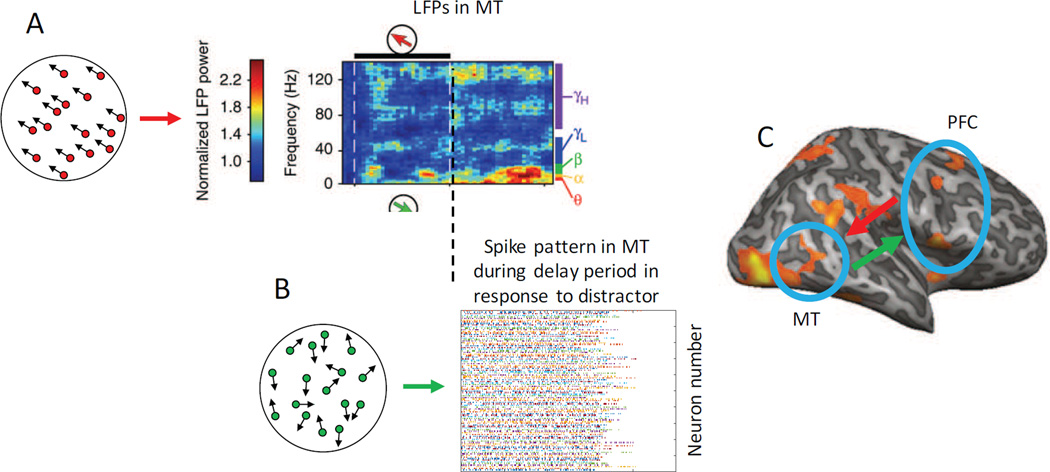Figure 8.
(A) The presentation of a memory sample stimulus evokes an initial content-specific pattern of spiking activity in MT, followed by a cessation of content-specific spiking activity during the delay period (see Figure 6). However, sustained feedback signals in the form of spike-field coherence from PFC to MT induce a stable sub-spiking-threshold LFP modulation in MT that exhibits selectivity for the remembered motion direction, particularly in the lower frequency bands (shown in red, data from Mendoza-Halliday et al., 2014). (B) During the delay period, distracting stimuli might still trigger spiking activity in MT that is unrelated to the identity of the remembered motion direction. However, the sustained top-down input from PFC might maintain neurons in MT in a ‘primed’ state that will in turn make content-specific spiking patterns more likely to re-emerge upon the presentation of the test stimulus. (C) Bi-directional flow of information between visual areas and PFC under this general account. Bottom-up spiking activity from the presentation of any sensory stimulus (sample, test, or distractor) feeds-forward into PFC, which in turn provides a sustained top-down signal that biases MT neurons in a feature-selective manner that is consistent with the relevant remembered motion direction. This effectively holds MT in a primed state in preparation for the presentation of the test stimulus at the end of the delay interval. Using this architecture, the tonic top-down biasing signals to MT might attenuate the potentially negative overwriting effects of intervening distractors, even in the absence of a sustained content-specific spiking code in MT. Some panels reprinted with permission from the author and the original publisher (Mendoza-Halliday et al., 2014).

